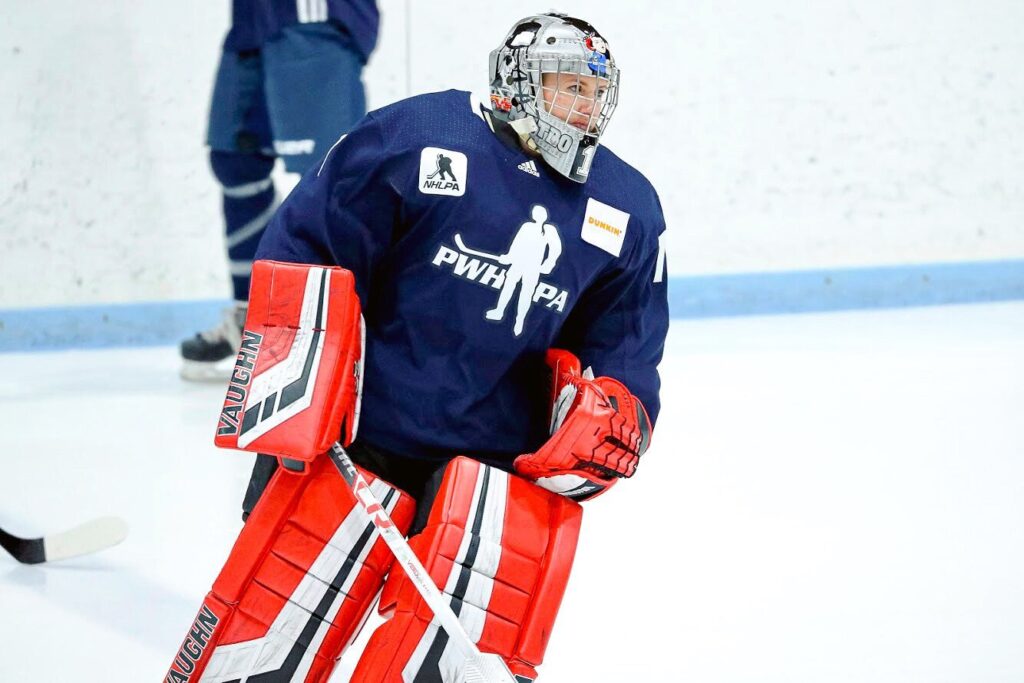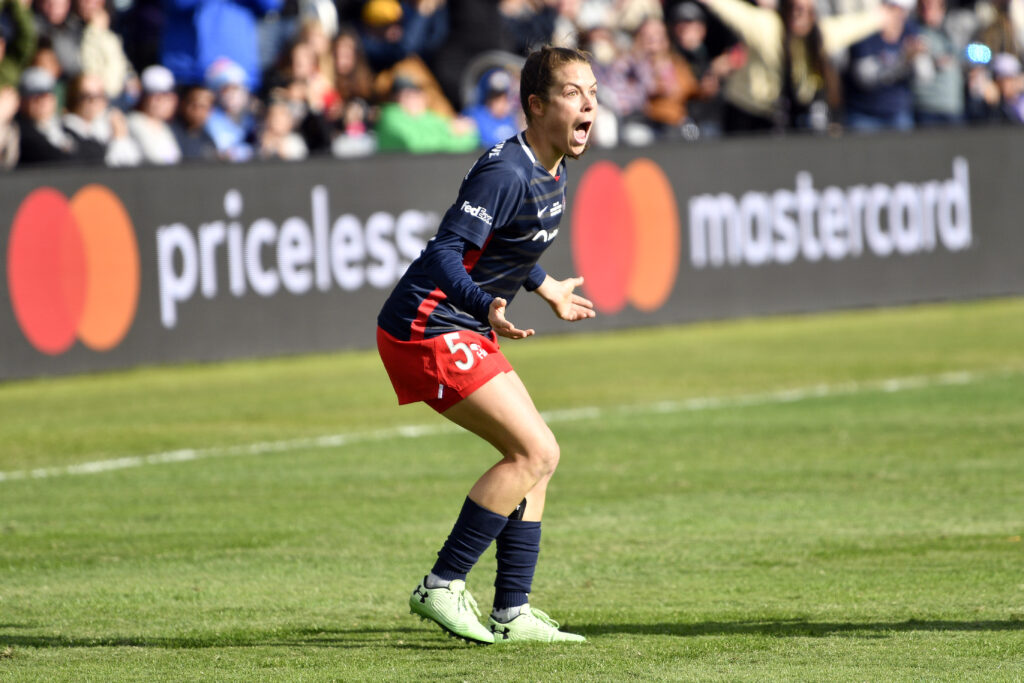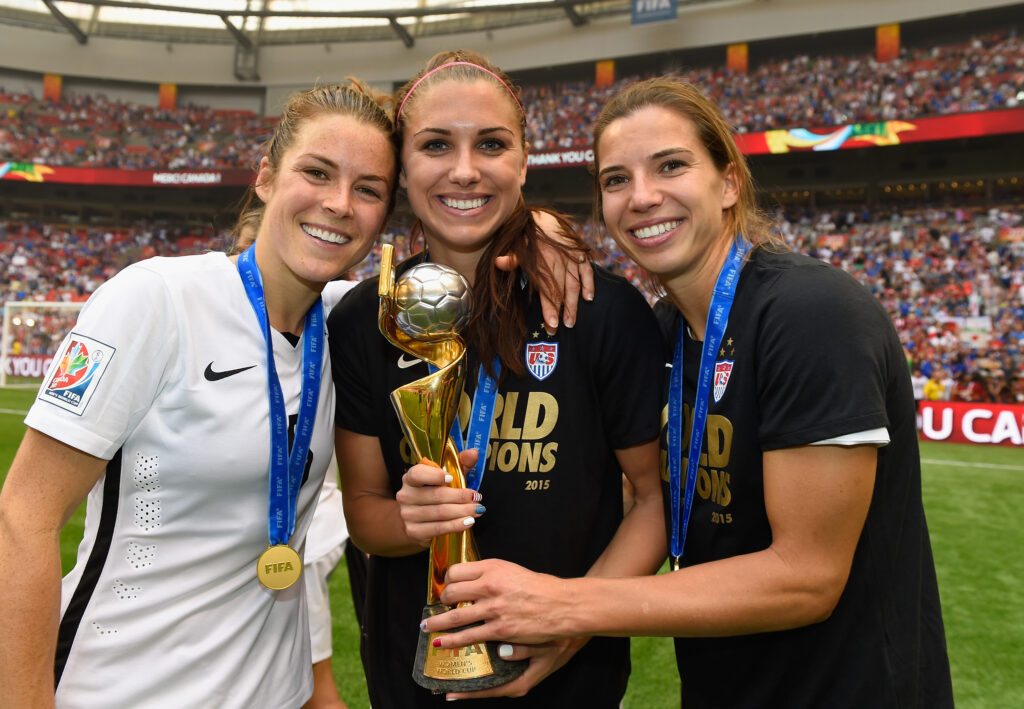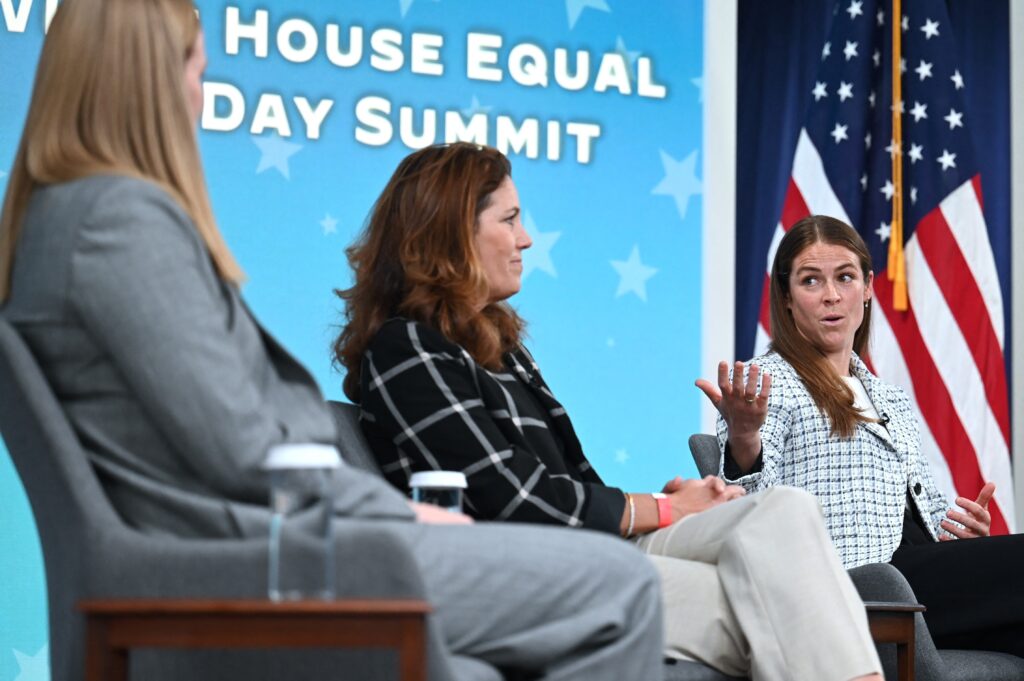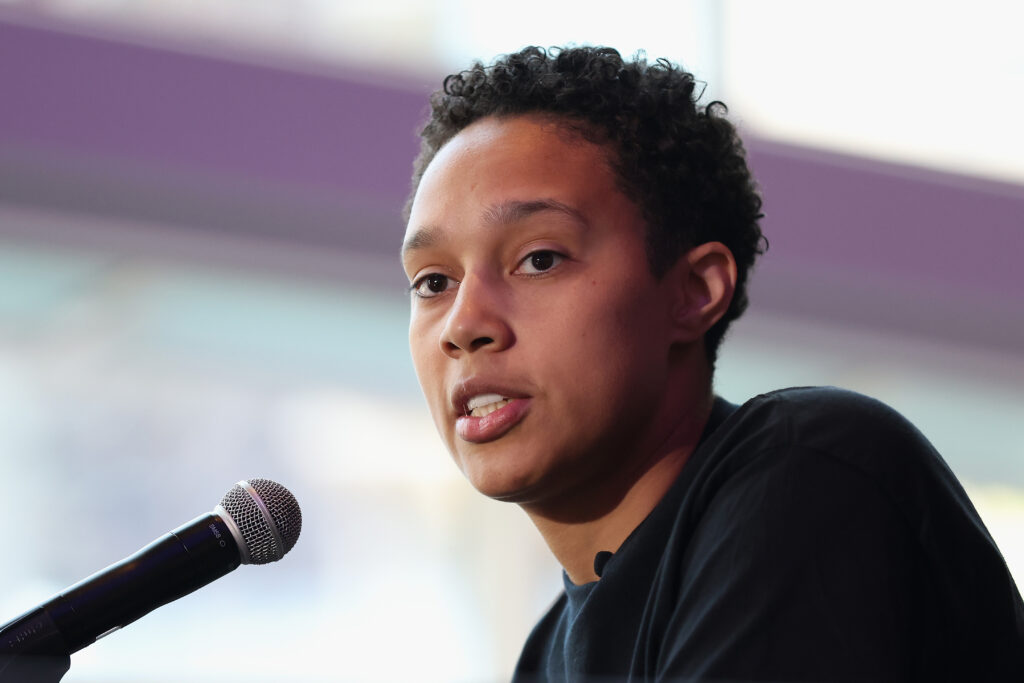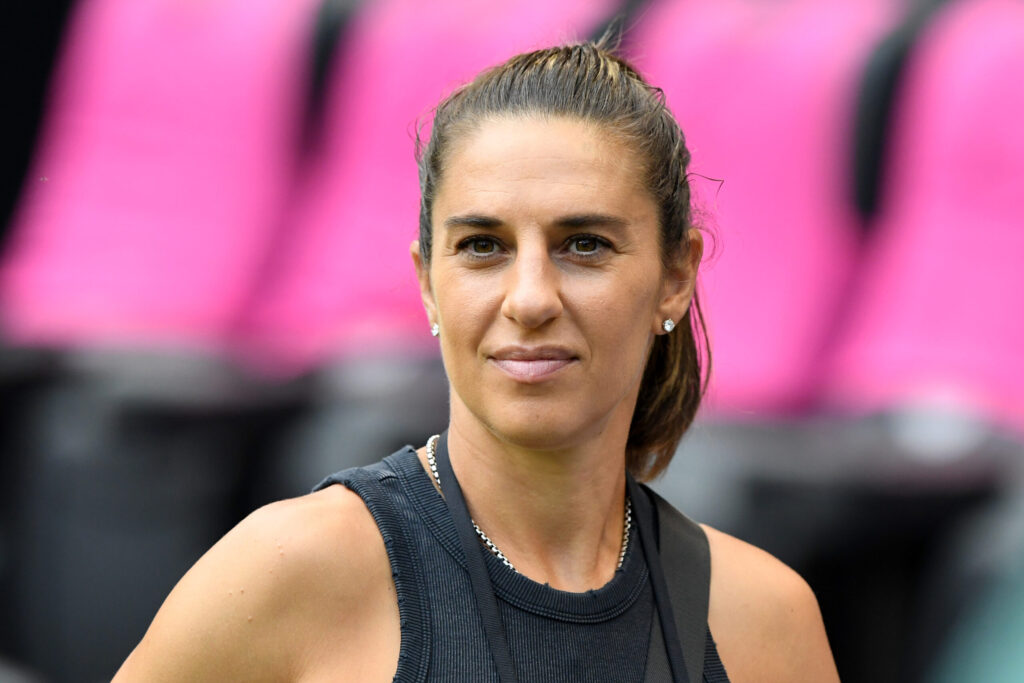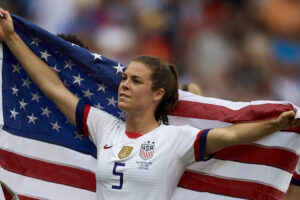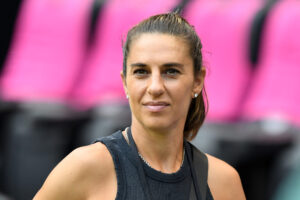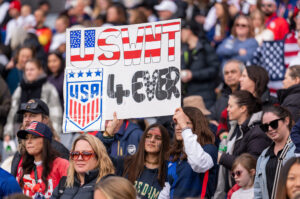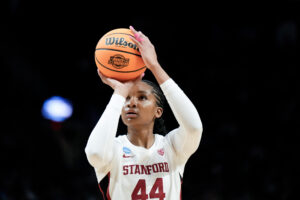Kimberly Sass is a professional women’s hockey goalie who helped found, and now plays for, the Professional Women’s Hockey Players Association (PWHPA). Sass played collegiate hockey at Colgate University and has previously played for the Metropolitan Riveters in the NWHL. Below, Sass talks with Just Women’s Sports about the PWHPA’s partnership with the United States Premier Hockey League, how COVID has shaped her perspective on sports, and the future of the PWHPA.
[Editor’s note: this interview took place the day of the PWHPA New Hampshire Hub’s first game against the Islanders Hockey Club of the USPHL]
How are you feeling coming back to play after so long?
Yeah, of course everyone hasn’t been on the ice for awhile. We just held tryouts last weekend and had one practice on Wednesday. We are trying to get acquainted with each other and just figure out who our teammates are. We are so happy the PWHPA has partnered with the USPHL this season — it’s offering us so much more competition and training. It’s so important right now especially during COVID because there are so many more options for teams we could play in just the Northeast alone.
It sounds like such a great opportunity.
Definitely. I recently watched Billie Jean King’s documentary on HBO. It reviewed her Battle of the Sexes match and it made me think of this weekend and our partnership with the USPHL. For us, we are not trying to treat this partnership as a “Battle of the Sexes” but as a training opportunity and a way to get extra competition throughout the season. I do think it’s hard, though, to not want to try and prove yourself, you know what I mean?
What do you think it will be like competing against the men’s teams?
A lot of our players grew up playing on boys teams. I played with boys for one year when I first started and then I actually played on my high school’s boys JV and Varsity teams. Overall, I think we are familiar with skating with men’s teams here and there. In terms of competing with them in more of a season formate, I think that might be new for some players. I’m sure there will be a transition period, but I think we will be fine.
This weekend will be the first of five Regional Training hubs to play this year. Can you explain more about that model and why the PWHPA chose it?
Sure. Last year was the first year of the Professional Women’s Hockey Players Association (PWHPA) and we had seven regions for training. This year, two of the regions were eliminated because we moved towards a model where each region would have more of a team feel. So the five regions were selected based on the number of players that lived in that area. Most players lived in Toronto, Montreal, Calgary, Minnesota and New Hampshire. There are going to be some floater players who can’t relocate to those regions, but for the most part, we have enough players in those regions to hold high-level, high-tempo practices.
How has COVID-19 impacted the PWHPA’s mission and operations?
When COVID first hit, we were waiting to see how it would all play out in terms of partners coming back for the second Dream Gap Tour. We were trying to figure out the logistics of travel and when we could actually play again. We were pleasantly surprised with how many of our existing partners returned and we actually have some new partners who jumped on board, too. In terms of the Dream Gap Tour showcase events which are typically hosted by NHL teams, we are shooting to begin those in January. Up until then, most teams will be selecting their own rosters and practicing in their hubs.
What are your expectations for game play given how much time players had to take off due to COVID?
It really depends on every player’s situation and if they had access to rinks or gyms. I think, for the most part, people were okay with the COVID break and just jumped right back in. As female athletes, we are used to high pressure situations. A lot of us work, too. Like, for this game tonight, I am working an entire day before I go step onto the ice. I’m on my lunch break right now. I’m in a hotel room working from home as an architectural designer. I found this quote once, and I forget who said it, but they said, “Pressure is a privilege.” I think we all just try to appreciate every time we are able to get on the ice.
I really like that. How has quarantine been for you? Do you have access to a gym?
I started doing a lot of home workouts, for sure. I actually moved from Jersey City back to my hometown in Buffalo, New York. Luckily, a local gym there called Revolution Buffalo started doing outdoor spin classes, circuit training and strength training so I try to do as many of those as possible. I purchased an indoor cycling bike, I have my TRX strap and my chin up bar. I got a slide board for my apartment to try and work on my lateral movement as a goalie. But it was definitely not as traditional as my usual offseason training. We all just made it work and now we’re going to put in that much more work to get to where we need to be.
What are some of your personal goals for this year?
Just to enjoy every moment that I have on the ice. I’m getting older, I guess, in terms of ages of female hockey players — I’m turning 30 in November. I just want to give it my all this season in terms of training and really cherishing the moments because we don’t know how much longer we’re going to get these opportunities.
Has COVID made you appreciate playing more?
I think, for certain players, the COVID break made them contemplate retiring. Some people considered not playing this season. I know that crossed my mind a little bit. I think that reflection and that realization that you don’t know when you are going to play next motivates you when you do have the opportunity to play.
How have you personally managed your architecture career with the PWHPA over the past few years?
I graduated from Colgate University in 2012 and went right into my masters of architecture program in Buffalo. There were no paid professional hockey opportunities in the United States and I did not want to delay my career by moving to Europe, so I just went right into grad school. In my final year of the architecture program, I played in the NWHL. I just knew that I wasn’t finished with hockey. I ended up moving to New York to pursue an architecture job and I also played for the Metropolitan Riveters for two years. In 2019, many of us players decided to leave the league and form the PWHPA in hopes of creating a truly professional, sustainable league with a livable wage and plenty of resources.
I haven’t answered the question, but I think I’m just used to juggling all these things. I think being a student athlete teaches you that balance and, for me, stepping on the ice is a way to clear my head. I also think my personality is to just get things done. And I’ve always tried to be a leader in terms of women’s hockey, so I really appreciate my position on the board for the PWHPA.
What does the PWHPA need to do to advance its goal of establishing a viable professional league?
I think we need to treat these exhibition games as opportunities to always be improving our skills and level of play. Once we do have that big stage to play on, we have to be able to prove to everyone that we deserve this.
After these regional exhibitions, is there a next step? What is the PWHPA going to do after?
The next step would be to have a full Dream Gap Tour season. Usually the tour runs from October to March, but with COVID, we are hoping that the showcase tournament weekends start in January. And then, ideally, we want to create more of a partnership with the NHL and create more of a structure of an actual league with pay. That’s what we’re shooting for.
What would a successful season look like in your eyes?
A successful season for the PWHPA players would look like players not having to work a full time job before going to a game. It would look like players being able to train on the ice whenever they choose and having access to workout facilities and full-size arenas. You know, the pay has to be there in order to attract the top talent. We’re shooting for a broadcast deal and just a total professional atmosphere with medical staff and equipment managers.
Do you have anything else you would like to add?
I think the most important message is that we’re striving for something better. We’re trying to keep the movement going. The goal is a future professional, sustainable league for women’s professional hockey. We deserve it. We’re going to continue to prove ourselves over and over again in these games. So join us, watch us, follow us and look forward to great things happening.
